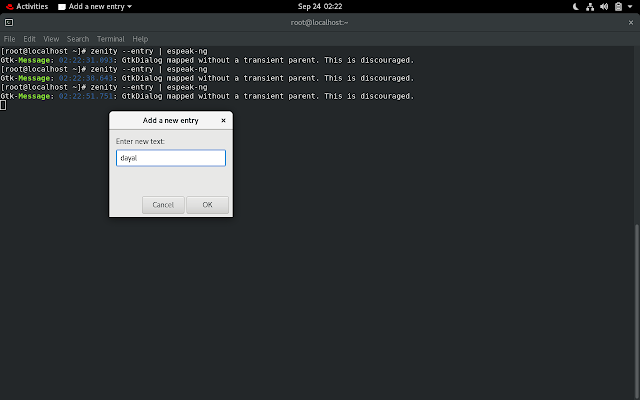In This Blog we learn how to perform espeak commands inside the red hat enterprise linux
What is espeak-ng?
eSpeakNG is a compact, open-source, software speech synthesizer for Linux, Windows, and other platforms. It uses a formant synthesis method, providing many languages in a small size. Much of the programming for eSpeakNG's language support is done using rule files with feedback from native speakers.
Some Major 7-commands of espeak-ng in linux
man espeak-ng
espeak-ng -f dayal.txt
espeak-ng -v en “ hello-world” -s 140
espeak-ng -v en+f2 “ hello world” -s 200
date | espeak-ng -s100
id | espeak-ng -s100
fortune | espeak-ng -s100
Zenity | espeak-ng









Comments